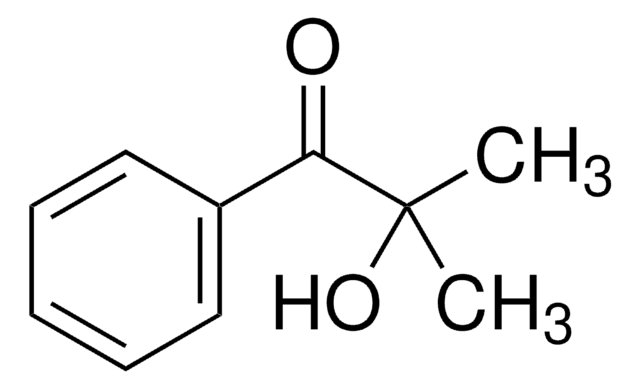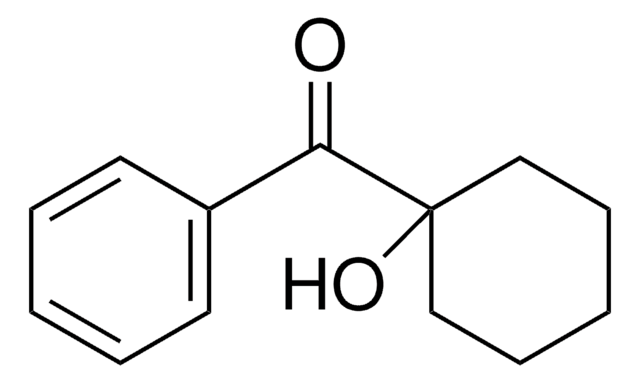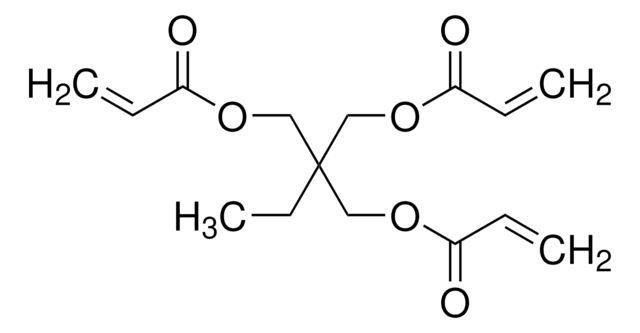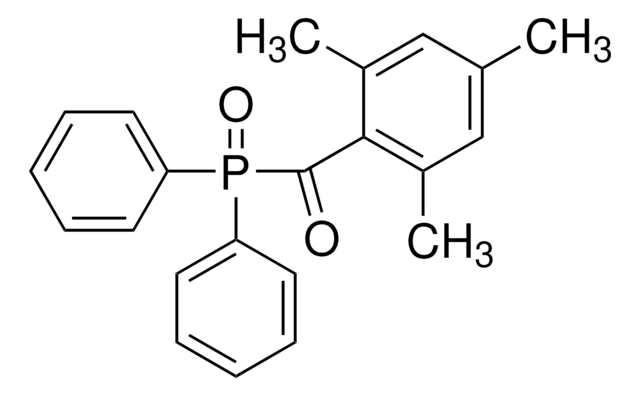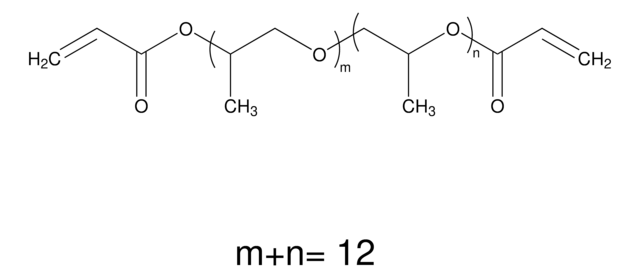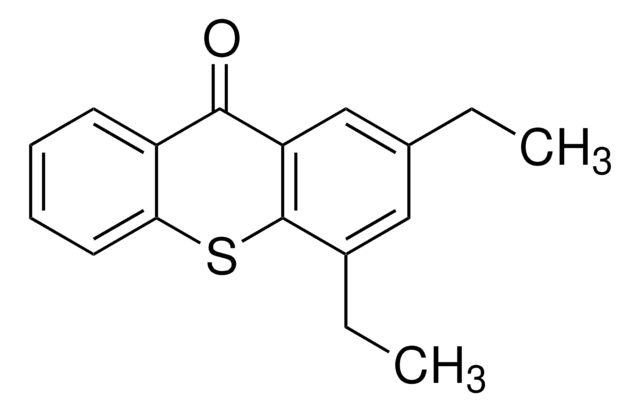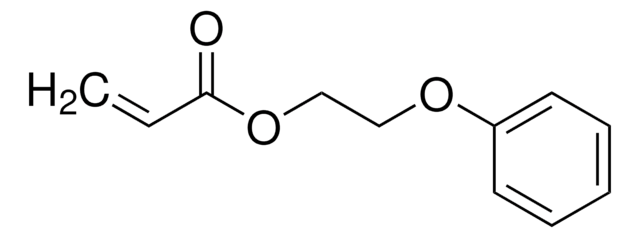246832
Tri(propylene glycol) diacrylate, mixture of isomers
contains MEHQ and HQ as inhibitors, technical grade
Sinónimos:
TRPGDA
About This Item
Productos recomendados
grade
technical grade
Quality Level
vapor density
>1 (vs air)
vapor pressure
<0.01 mmHg ( 20 °C)
form
liquid
contains
150-220 ppm monomethyl ether hydroquinone and hydroquinone (total inhibitor)
refractive index
n20/D 1.45 (lit.)
density
1.03 g/mL at 25 °C (lit.)
SMILES string
CC(COC(C)COC(=O)C=C)OCC(C)OC(=O)C=C
InChI
1S/C15H24O6/c1-6-14(16)20-12(4)9-18-8-11(3)19-10-13(5)21-15(17)7-2/h6-7,11-13H,1-2,8-10H2,3-5H3
InChI key
ZDQNWDNMNKSMHI-UHFFFAOYSA-N
Categorías relacionadas
General description
Application
- As a cross linker to synthesize resins for flexible micromaterials via projection microstereolithography (PμSL) screening formulations to fabricate microfluidic devices for cellular biosensors.
- As a dopant to prepare pure organic molecules with persistent luminescence at room temperature via intramolecular electronic coupling for forensic fingerprint detection.
- As a precursor to prepare high mechanical resilience double network hydrogel adhesives for wound healing patches.
signalword
Warning
hcodes
Hazard Classifications
Aquatic Chronic 2 - Eye Irrit. 2 - Skin Irrit. 2 - Skin Sens. 1 - STOT SE 3
target_organs
Respiratory system
Storage Class
10 - Combustible liquids
wgk_germany
WGK 2
flash_point_f
307.4 °F - closed cup
flash_point_c
153 °C - closed cup
ppe
Eyeshields, Faceshields, Gloves, type ABEK (EN14387) respirator filter
Elija entre una de las versiones más recientes:
¿Ya tiene este producto?
Encuentre la documentación para los productos que ha comprado recientemente en la Biblioteca de documentos.
Los clientes también vieron
Global Trade Item Number
| Número de referencia del producto (SKU) | GTIN |
|---|---|
| 246832-100G | 4061837404764 |
| 246832-500G | 4061837404771 |
Nuestro equipo de científicos tiene experiencia en todas las áreas de investigación: Ciencias de la vida, Ciencia de los materiales, Síntesis química, Cromatografía, Analítica y muchas otras.
Póngase en contacto con el Servicio técnico
